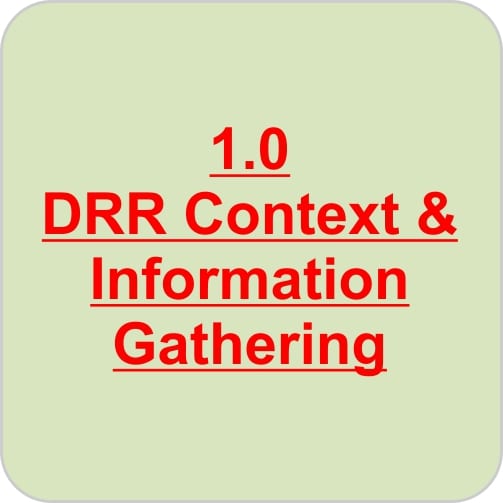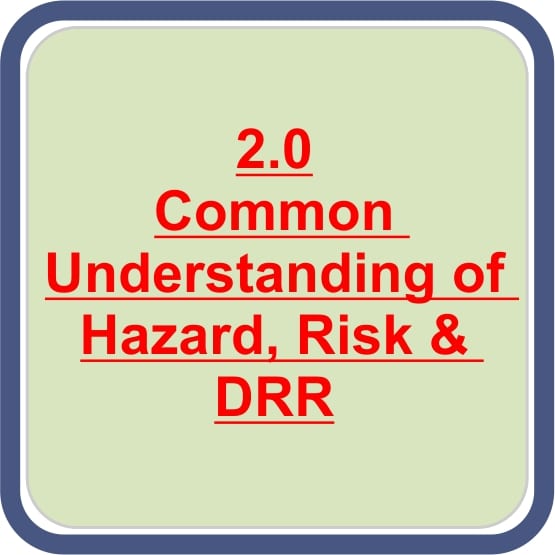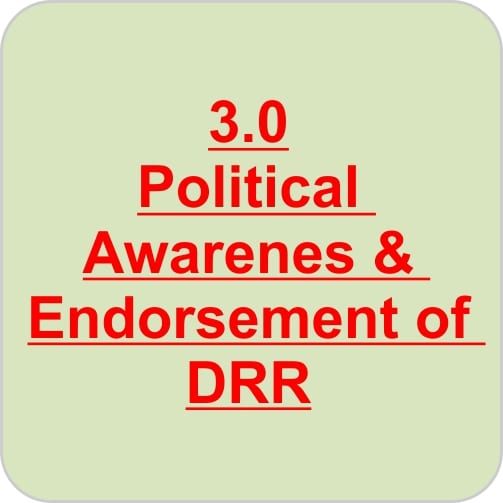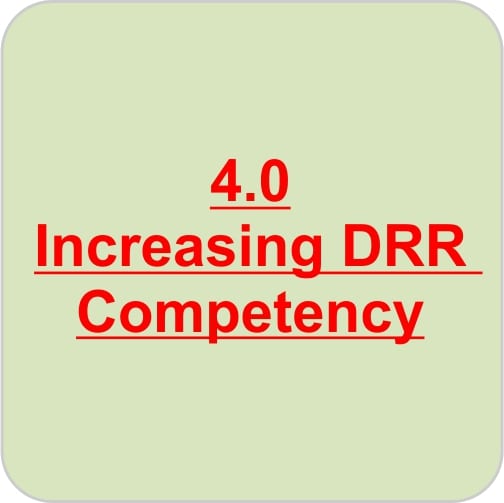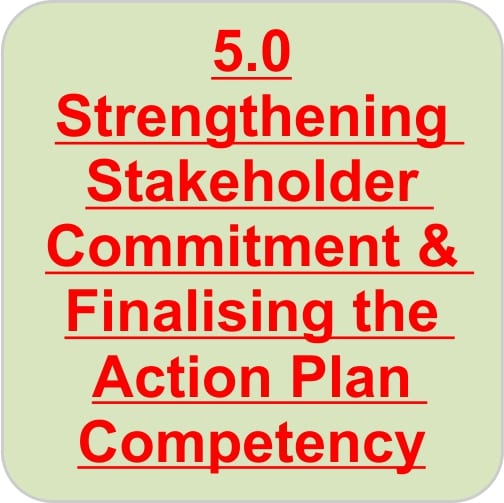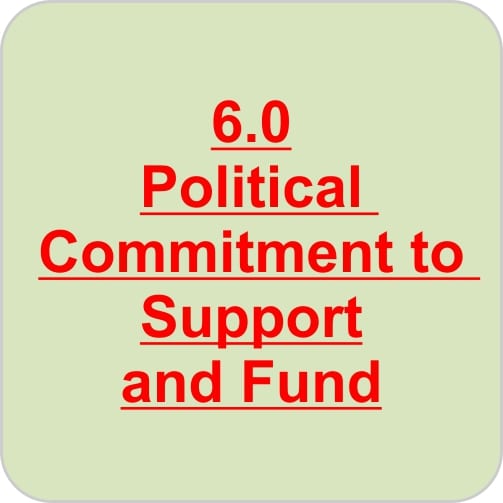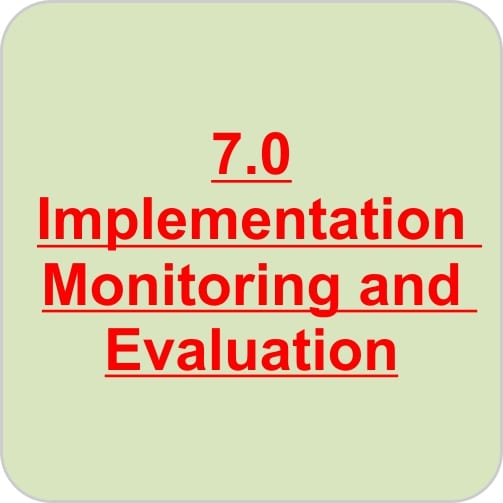
2.0 Common understanding of hazard, risk and DRR
Develop an initial District DRR Action Plan and establish a capacity and capability benchmark for the district.
Activities
Action Plan Workshop
- Hold an Action Plan workshop with stakeholders to create a DRAFT action plan. This should be based on a shared understanding of hazard, risk, and Disaster Risk Reduction strengths and weaknesses.
- Focus should be on DRR as opposed to preparedness and response.
- Draw on the experience of the StIRRRD network of districts. These are people who have gone through this process and can offer advice and talk about their experience.
- Draw out information, identify gaps and agree priorities for action using techniques such as: 1) Comparative risk assessment (SMG) to rank risk and identify current hazard management practices. 2) Focus Group Discussions to illicit specific information on, e.g. children, business, vulnerable groups, role of women in DRR. 3) Field trips to see what is happening on the ground. 4) Consider the Yonmenkaigi System Method (YSM) to develop actions
DRR-LG-SAT Survey
- Assess district DRR practices by undertaking a survey. This becomes a benchmark against which progress can be measured. The tool developed by StIRRRD is the DRR-LG-SAT which is based on a version of an LG-SAT developed by BNPB.Develop an engagement strategy for engagement on DRR with agencies of thedistrict government (OPDs).
Update District DRR profiles
- Update the draft DRR profile prepared in Development Stage 1 with theinformation gained during this stage. Finalise the profile.
Activity Resources and Instruments
- Action Plan Template
- DRR-LG-SAT Survey Questionnaire
- DRR-LG-SAT Scoring Guide
- DRR Action Plan Development Process
- SMG Comparative Risk Assessment Method
- SMG Exercise
- Yonmenkaigi System Method (YSM)
- YSM Example – Bengkulu City
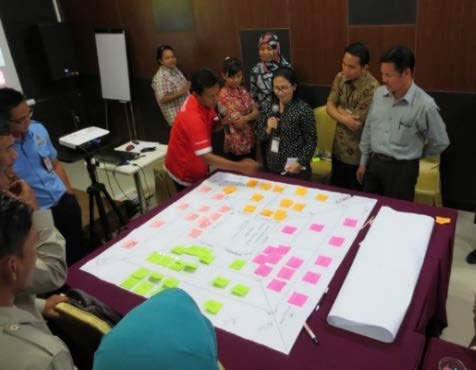
Outputs
- Action Plan DRAFT version 1
- DRR-LG-SAT Result Analysis
- Ranked Risk from SMG
- District DRR Profile – Donggala
- Focus Group Discussion Analysis

